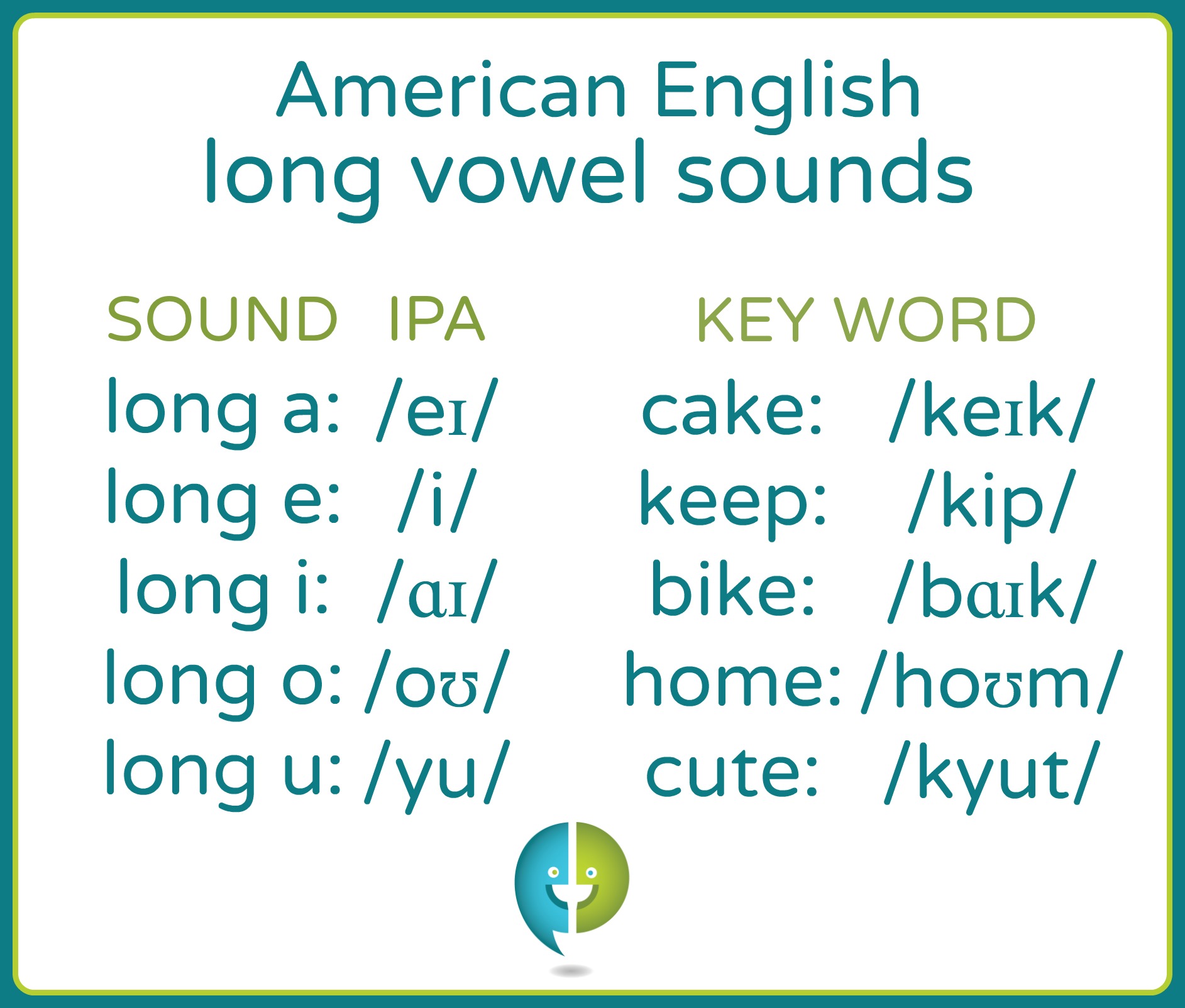What is a long vowel sound?
Long vowel is the term used to refer to vowel sounds whose pronunciation is the same as its letter name. The five vowels of the English spelling system ('a', 'e,' 'i,' 'o,' and 'u') each have a corresponding long vowel sound /eɪ/, /i/, /ɑɪ/, /oʊ/, /yu/. Long vowels are generally the easiest vowels for non-native English speakers to distinguish and pronounce correctly.
It is easier to hear vowel sounds within words than it is to hear the sound alone. Listen to the following words to help learn to hear individual sounds.
long a /eɪ/: cake /keɪk/ (pronounce it, spell it, practice it)
long e /i/: keep /kip/ (pronounce it, spell it, practice it)
long i /ɑɪ/: bike/bɑɪk/ (pronounce it, spell it, practice it)
long o /oʊ/: home /hoʊm/ (pronounce it, spell it, practice it)
long u /yu/: cute /kyut/ (pronounce it, spell it, practice it)
Introduction to two-sound vowels
A two-sound vowel is a vowel sound that includes a 'y sound' /y/or a 'w sound' /w/ in the pronunciation. Often, the /y/ or /w/ is only a minor part of the sound, but must be included for the sound to be pronounced fully. Two-sound vowels are known linguistically as diphthongs (pronounced as dip-thong or dif-thong).
In North American English, four of the five long vowel sounds are pronounced as two-sound vowels.
long a /eɪ/, ends in a brief /y/
long i /ɑɪ/, ends in a brief /y/
long o /oʊ/, ends in a brief /w/
long u /yu/, begins with a brief /y/
This lesson--and many more--are available in our books and ebooks!
Note that /yu/ is essentially the /y/ plus the 'oo sound' /u/ and is the only vowel sound that will be preceded by the article a rather than an. Thinking of /yu/ to be a two-sound vowel helps to distinguish it from /u/ for learning purposes.
The Vowel-Consonant-e (VCe) pattern
A spelling pattern that is true for all long vowel sounds is the Vowel-Consonant-e (VCe) pattern. The VCe pattern states that when a single vowel is followed by a single consonant, then the letter 'e', the first vowel is pronounced as a long vowel sound and the letter 'e' is silent.
Vowel-consonant-e spelling examples
long a /eɪ/: late /leɪt/
long e /i/: delete /də lit/
long i /ɑɪ/: kite /kɑɪt/
long o /oʊ/: note /noʊt/
long u /yu/: cute /kyut/




